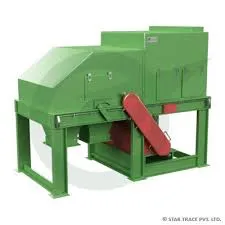
9 月 . 28, 2024 20:49 Back to list
How Do You Recycle Old Electronics?
In today's rapidly evolving technological landscape, the average consumer often finds themselves with old electronics that have been replaced by the latest models. From smartphones and laptops to tablets and televisions, electronic waste, or e-waste, is becoming a significant environmental concern. Proper recycling of these items is not just beneficial for the planet; it also helps to recover valuable resources and reduces pollution. Here’s how to recycle old electronics responsibly.
First and foremost, it’s essential to understand what qualifies as e-waste. Electronics like computers, mobile phones, printers, microwaves, and even gaming consoles are all considered e-waste. The components of these devices often contain hazardous materials such as lead, mercury, and cadmium, which can be harmful to the environment if not disposed of properly. Thus, recycling these items rather than throwing them in the trash is crucial.
How Do You Recycle Old Electronics?
If your electronics are no longer usable, the next step is to find a proper recycling program. Many manufacturers, retailers, and municipalities offer e-waste recycling programs. Major electronics companies like Apple, Dell, and HP have take-back schemes that encourage consumers to return old devices. Retail chains such as Best Buy also have recycling kiosks for various electronics.

Additionally, check with your local waste management program. Many cities have designated e-waste collection days where residents can drop off their old electronics for recycling. Some municipalities may even organize special events aimed at gathering e-waste from households. These initiatives are often advertised through community bulletins or websites.
When you decide to recycle your old electronics, remember to erase personal data from the devices. This step is crucial, especially for smartphones and computers, as they can contain sensitive personal information. Before recycling, perform a factory reset and remove any SIM cards. Consider using data-wiping software for computers to ensure that all data is thoroughly erased.
Once your devices are ready for recycling, it’s essential to follow the guidelines set by the recycling program or facility. Some items may need to be sorted or disassembled, while others may have specific handling requirements due to hazardous materials. By following these guidelines, you ensure that the old electronics are processed correctly, minimizing environmental impact.
Understanding the importance of e-waste recycling doesn’t end with the disposal of your old devices. Awareness and education are key. Encouraging friends and family to recycle their electronics and spreading the word about local recycling programs can significantly increase participation in these initiatives.
In conclusion, recycling old electronics is an essential step in conserving resources and protecting the environment. By donating functional devices and utilizing recycling programs for those that are no longer usable, we can significantly reduce e-waste. It’s not only an opportunity to help the planet but also a chance to contribute to a circular economy where materials are reused and repurposed. The next time you upgrade your gadgets, take a moment to think about how you can recycle your old electronics responsibly.
Latest news
Unveiling the Power of Eddy Current Separator
NewsSep.25,2024
Transform Your Home Recyclin:home metal shredder
NewsSep.25,2024
The Future of Waste Management with Recycling Line Picker
NewsSep.25,2024
The Benefits of a Metal Recycling Plant
NewsSep.25,2024
Revolutionize Material Separation with Onwang Technology
NewsSep.25,2024
Innovative Waste Management: Unveiling the MSW Sorting Plant
NewsSep.25,2024